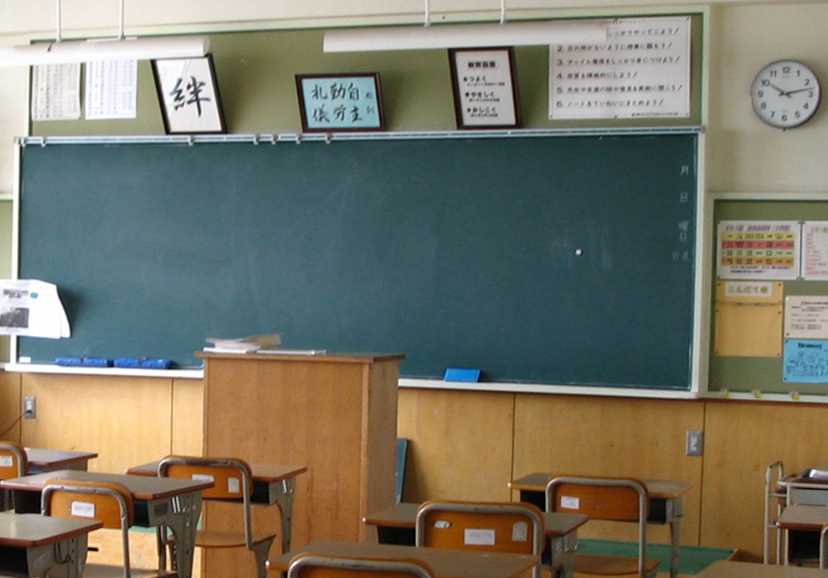Education
U.S. Public School Enrollment Has Peaked
Enrollment in U.S. public schools has peaked and will continue to decline, given low birth rates and homeschooling.

In the second half of the 20th century, enrollment in U.S. public schools nearly doubled. There was some slowdown during desegregation as enrollment in private schools surged. However, growth resumed by the early 1980s at a little less than 2% each year. But by the late 1990s, the growth rate began to noticeably slow, eventually falling to under 0.5% annually. Public school enrollment peaked in 2019 at 50.8 million.
The enrollment decline during COVID
During the pandemic, parents pulled about 1.5 million children out of public schools. For the most part, those children do not appear to have returned. The National Center for Education Statistics (NCES) now estimates that public school enrollment will fall by the end of this decade to just under 47 million.
It is important to note that the official public school enrollment numbers include charter schools, which have grown over the last 20 years from 1 million to nearly 5 million. If you subtract the charter school students, enrollment in traditional public schools peaked in 2012 and has since declined by 5%.
There are several factors affecting public school enrollment. First, as I have previously noted, women everywhere in the world, but particularly in the U.S., are having fewer children. The Census Bureau recently reported that the current fertility rate (children per woman in her lifetime) has dropped to 1.76. A rate of about 2.1 is necessary to maintain a stable population.
As a result, the 63.7 million school-age children today is only slightly more than in 2010. The U.S. Census Bureau currently projects that the number of school-age children will decline by 6% to 59.9 million by 2050. The reality is that, absent allowing a large increase in immigration, the U.S. will never have more school-age children than it does today.
Homeschooling grows
The second factor is the rapid growth in homeschooling. Over the last two decades, the number of children being homeschooled has tripled from one million to three million. That has moved the percentage of children being homeschooled from 2% to 5%.
One of the barriers to homeschooling was the lack of extracurricular activities, especially athletics. However, there has been a large-scale movement to organize such activities within the homeschooling communities, which appears to be quite successful.
Charter schools and homeschooling have combined to drop the percentage of children enrolled in traditional public schools from 84% 20 years ago to 78% today. The drop would have been more precipitous had it not been for the fact that private and parochial schools have both been losing enrollment even faster than public schools. Parochial enrollment has fallen by 40% and private schools by 25%. It appears that charter schools and homeschooling may hurt parochial and private school enrollment as much, if not more, than they decrease public school enrollment.
There are several important takeaways from this data.
We don’t need as many schools
First, we should use it to inform our investments in education facilities. The truth is we do not need any more schools, at least in the aggregate, than we have today. In fact, we should probably already be closing some schools. Certainly, there will be localities where there is still growth and which will need to build some new schools. The exodus from cities to the suburbs and exurbs is an example. But even in those areas, the demographic reality will quickly eliminate the need for any more expansion.
Second, the stagnant enrollments are certainly inconsistent with the immigration hawks’ narrative that children of illegal immigrants are flooding our public schools. In a 2023 report based on 2021 data, the Center for Immigration Studies estimated that there were about 3.2 million children enrolled in a public school who have at least one parent who is in the country illegally. However, in many cases, the other parent is a U.S. citizen, and a 2014 Pew Foundation study concluded that about three-fourths of these children had been born in the U.S. and were, therefore, U.S. citizens.
The data on which both the CIS and the Pew Foundation relied mostly pre-dated the recent surge of border crossings. However, even the most recent data on total enrollment is still not showing any increase. It is probably fair to infer from this data that if it were not for the surge in immigration, public school enrollment would be even more sharply declining.
From enrollment to other areas
The effect of the ongoing demographic sea change on public education is just one of a myriad of other social, economic, and political systems that are going to be upended by it. We are seeing this first in public education because the drop in birth rates most immediately affects younger generations. However, expect to see more and more manifestations of this demographic sea change through which we are living.
Note: In doing this research, I found that school enrollment statistics are much less exact than I expected. The reporting of enrollment does not appear to be very rigorous. Also, the enrollment changes throughout the school year, so the counts can vary significantly depending on when the count is taken. There are also various incentives to overcount enrollment. For the purposes of this post, I have relied primarily on the National Center for Educational Statistics and the U.S. Census Bureau statistics. I also used Microsoft’s AI, Co-Pilot, to assemble some tables for comparison. While there are some small differences in the numbers reported, the differences are not significantly relative to the overall trend line.
This article was originally published by RealClearPolitics and made available via RealClearWire.
Bill King is a businessman and lawyer, and is a former opinion columnist and editorial board member at the Houston Chronicle. He has served in a number of appointed and elected positions, including mayor of his hometown. He writes on a wide range of public policy and political issues. Bill is the author of “Unapologetically Moderate” and currently serves as the co-chair of the Forward Party of Texas.
-

 Executive1 day ago
Executive1 day agoWaste of the Day: Can You Hear Me Now? No.
-

 Civilization1 day ago
Civilization1 day agoTrump’s version of the Monroe Doctrine
-

 Civilization5 days ago
Civilization5 days agoTen Reasons To Cheer the Arrest of Maduro
-

 Civilization3 days ago
Civilization3 days agoOne Fell Swoop: Lawsuit Eyes Death Blow to Racial Preferences
-

 Civilization2 days ago
Civilization2 days agoTrump’s New Doctrine of Precision Deterrence
-

 Civilization21 hours ago
Civilization21 hours agoThe Snatch and Grab of Maduro Was Not ‘Illegal’
-

 Civilization21 hours ago
Civilization21 hours agoThe Mission to Extradite Nicholas Maduro
-

 Executive3 days ago
Executive3 days agoWaste of the Day: $1.6T in Wasteful Spending in Rand Paul’s “Festivus” Report














